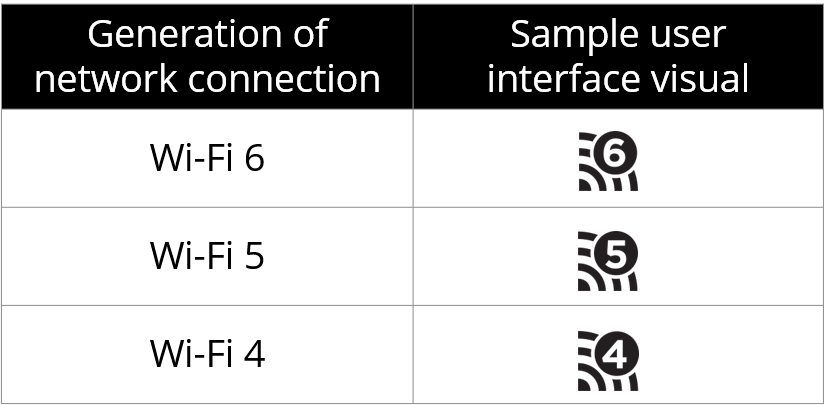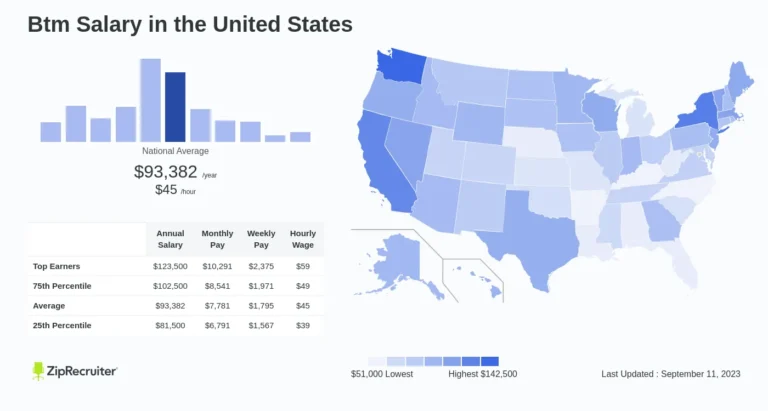How Many Versions Of WiFi Are There?
WiFi is an important part of our daily lives, allowing us to easily stay connected to the internet and other devices. It is constantly evolving and there are now many different versions of WiFi. The most common version of WiFi is 802.11ac, but there are also other versions such as 802.11b, 802.11g, 802.11n, and others. Each version of WiFi has its own advantages and disadvantages, making it important to understand the differences between them when choosing a WiFi network. This article will discuss the various versions of WiFi and how they are different from each other.
Overview of WiFi
Versions
Wi-Fi, or wireless fidelity, is a technology that allows computers, phones, and other devices to connect to the internet without the use of wires or cables. It is one of the most widely used technologies today, and there are many different versions of it. Each version of Wi-Fi is designed to provide faster and more reliable connections than the previous one. This article will provide an overview of the different versions of Wi-Fi, their features, and benefits.
The first version of Wi-Fi was the 802.11b, which was released in 1999. This version provided 2.4 GHz frequency support and data rates up to 11 Mbps. It was the most widely used version for many years, but its slow speeds and limited range made it unsuitable for many applications.
The next version, 802.11a, was introduced in 1999 as an alternative to the 802.11b. It provided 5 GHz frequency support and data rates up to 54 Mbps. Although it was faster than the 802.11b, its range was limited, and it was not widely adopted.
The third version of Wi-Fi was 802.11g, which was released in 2003. It provided compatibility with the 802.11b, while also providing faster speeds and better range. It provided data rates up to 54 Mbps and was the first version to become widely adopted.
The fourth version of Wi-Fi is 802.11n, which was released in 2009. It provided improved performance over previous versions, with data rates up to 600 Mbps. It is the most widely used version of Wi-Fi today, and is used in most home and office networks.
The latest version of Wi-Fi is 802.11ac, which was released in 2014. It provides even faster speeds and improved range, with data rates up to 6.9 Gbps. It is the most advanced version of Wi-Fi, and is suitable for the most demanding applications.
Overall, there are five main versions of Wi-Fi, each of which provides faster speeds and better range than the previous version. They are 802.11b, 802.11a, 802.11g, 802.11n, and 802.11ac. Each version of Wi-Fi provides different benefits, and each is suitable for different applications.
History of WiFi
WiFi has come a long way since its inception in 1985. It began as a wireless local area network (WLAN) used to connect computers to each other in a local area. Now, it is used to connect to the Internet and is an essential part of everyday life. So, how many versions of WiFi are there?
The first version of WiFi was released in 1997 as IEEE 802.11. Since then, there have been several updates and additions to the standard, leading us to the current version, 802.11ax. This latest version of WiFi, known as WiFi 6, offers speeds up to 10 Gbps, which is three times faster than the previous generation. It also offers improved security, increased range, and better battery life.
WiFi has evolved a great deal over the years with the introduction of new technologies. For instance, the introduction of mesh networks has enabled users to extend their home WiFi networks to cover large areas. Additionally, WiFi 6E, which is an extension of WiFi 6, offers support for the 6GHz spectrum, which provides even faster speeds.
At present, there are four major versions of WiFi: 802.11a, 802.11b, 802.11g, and 802.11n. These older versions are still in use in some places, but they are slowly being phased out due to their limited speeds and range.
WiFi is an ever-evolving technology and it is likely that future versions will offer even more features and faster speeds. It is also likely that the use of WiFi will continue to expand as more and more people come to rely on it for their everyday needs.
Types of WiFi Technology
WiFi technology has been around for some time now and has seen many versions come and go. In its current form, there are three main types of WiFi technology: 802.11a, 802.11b, and 802.11g. Each of these standards has different features, speeds, and capabilities, making them suitable for different uses and applications.
802.11a is the oldest of the three standards and offers speeds of up to 54 Mbps. It operates in the 5 GHz frequency range, which makes it suitable for applications that require high speeds and low interference. It is also backward compatible with older 802.11b and 802.11g networks.
802.11b was the first widely adopted WiFi standard and provides speeds of up to 11 Mbps. It operates in the 2.4 GHz frequency range, making it better suited for applications that require greater range but don’t need high speeds. It is also backward compatible with 802.11a networks.
802.11g is the most popular standard today and is also backwards compatible with 802.11b networks. It operates in the 2.4 GHz frequency range and offers speeds of up to 54 Mbps, making it a good choice for applications that need both speed and range.
WiFi technology is constantly evolving and newer versions are being developed all the time. The latest version, 802.11n, is capable of speeds of up to 600 Mbps and operates on both the 2.4 GHz and 5 GHz frequency bands. It is also backward compatible with 802.11a, 802.11b, and 802.11g networks, making it a good choice for a wide variety of applications.
So, to answer the question of how many versions of WiFi there are, the answer is three main versions: 802.11a, 802.11b, and 802.11g. However, newer versions, such as 802.11n, are gaining in popularity. Ultimately, the right version of WiFi technology will depend on the application and the user’s needs.

Current WiFi Versions
WiFi has come a long way since it was first introduced in 1997. While the original version, IEEE 802.11, was limited to speeds of 2 Mbps, the latest WiFi version, IEEE 802.11ax, can reach speeds up to 10 Gbps. The progression of WiFi technology hasn’t been confined to one version. In the years since its debut, WiFi has gone through several versions, each designed to provide faster, more reliable connections than the previous versions.
The 802.11 standard encompasses several versions of WiFi, including 802.11a, 802.11b, 802.11g, 802.11n, 802.11ac, and 802.11ax. Each of these versions provides users with higher speeds and better coverage than the last. 802.11a is the first version of WiFi to be released, offering speeds of up to 54 Mbps. 802.11b, which was released shortly after, increased speeds to up to 11 Mbps. 802.11g, released in 2003, raised the speed limit to 54 Mbps. The 802.11n version, released in 2009, increased speeds to up to 600 Mbps. The 802.11ac version, released in 2013, nearly doubled the speed of 802.11n, offering speeds of up to 1.3 Gbps. The latest WiFi version, 802.11ax, released in 2020, offers speeds up to 10 Gbps.
WiFi technology is constantly evolving. As newer versions of WiFi become available, users can expect to see faster speeds and more reliable connections. With each new version, users can enjoy faster downloads, improved streaming, and quicker response times.
Benefits of Upgrading to the Latest WiFi Version
WiFi technology has come a long way over the past few decades. In 2021, there are multiple versions of WiFi, each offering its own unique benefits in terms of speed, reliability, and range. Upgrading to the latest WiFi version can bring many advantages to those who want to stay connected.
For starters, upgrading to the latest WiFi version can provide a much faster internet connection. This is especially true in crowded areas or locations with a lot of traffic, as the latest version of WiFi can handle more data with greater ease. Additionally, the latest WiFi version will also have better signal strength and range, meaning that you can stay connected from further away.
Moreover, upgrading to the latest WiFi version is also beneficial for those who do a lot of streaming or gaming. The latest version of WiFi can provide a smoother and more reliable experience, reducing lag and buffering times. Additionally, the latest version of WiFi is also much more secure than previous versions, meaning that your data is safe and secure.
Overall, upgrading to the latest WiFi version can provide a host of benefits, from faster speeds and better signal strength to improved security and reliability. Whether you are a casual user or an avid gamer, there are plenty of reasons to upgrade to the latest version of WiFi.
Limitations of WiFi Versions
The world of wireless networking is constantly evolving, and with each new version of WiFi come improved speeds and capabilities. But before you can take advantage of the latest advancements, it’s important to understand the different versions of WiFi and their limitations. There are currently four major versions of WiFi, each with its own maximum speed and other capabilities.
WiFi 1, also known as 802.11b, is the oldest and slowest version of WiFi, having been released in 1999. With a maximum speed of 11 Mbps, this version of WiFi is no longer suitable for modern needs, although it is still used in some older devices.
WiFi 2, or 802.11a, was released in 1999 and is capable of up to 54 Mbps. This version of WiFi is still used in some devices, but is not as popular as the newer versions.
WiFi 3, or 802.11g, was released in 2003 and is capable of up to 54 Mbps. This version of WiFi is the most popular and is used by most devices that support WiFi.
WiFi 4, or 802.11n, was released in 2009 and is capable of up to 600 Mbps. This version of WiFi is the most powerful, and is used by most modern devices that support WiFi.
To take full advantage of the latest advancements in wireless networking, it’s important to understand the capabilities and limitations of each version of WiFi. Knowing which version is the right choice for you can help you make the most of your wireless network.
FAQs About the How Many Versions Of WiFi Are There?
Q1: How many versions of WiFi are there?
A1: Currently, there are four versions of WiFi: 802.11a, 802.11b, 802.11g, and 802.11n.
Q2: What is the difference between these WiFi versions?
A2: The different versions of WiFi offer different maximum data speeds. 802.11a offers up to 54 Mbps, 802.11b offers up to 11 Mbps, 802.11g offers up to 54 Mbps, and 802.11n offers up to 600 Mbps.
Q3: Which version of WiFi should I use?
A3: The best version of WiFi to use depends on your needs. If you require faster speeds, then 802.11n may be the best option. However, if you just need basic internet access then 802.11g or 802.11b will be sufficient.
Conclusion
In conclusion, there are currently four main versions of WiFi, namely 802.11a, 802.11b, 802.11g, and 802.11n. WiFi technology is continually evolving, and as new versions are released, the speed, range, and reliability of WiFi will only continue to improve.





